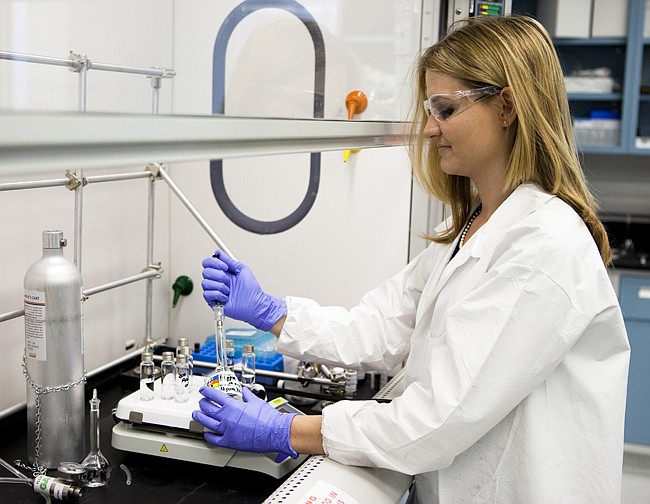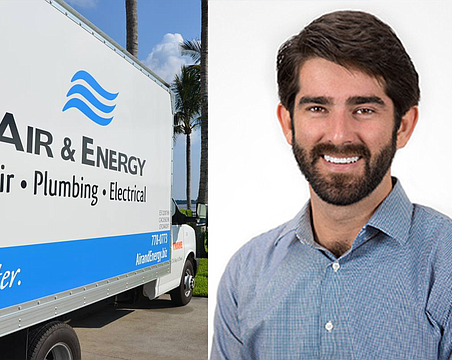Shifting to a more high-tech “innovation economy” may be easier said than done for a state economy long driven by the population growth engine.
For a state destined to become demographically dominated more than ever by migrating retirees, the situation creates what University of West Florida economist Rick Harper says is “an interesting paradox.”
But “damn the demographic torpedoes,” Enterprise Florida, the state's principal economic development organization, is planning to do just that.
Titled “The Roadmap to Florida's Future,” it's the five-year plan for 2007-2012, mandated by the Legislature, driving the state's economic policy-making to diversify Florida's economy.
A 2009 Progress Report refers to 2008 as “a transition year for Florida's economy,” and makes the point that recent events “demonstrate why Florida must no longer rely upon in-migration and rapid population increases to fuel its growth,” and instead work toward building the innovation economy.
However, the report also claims that “economic diversification helped soften the blow of the declining housing market,” noting that international trade, the social sector — including healthcare and education — and tourism helped prop up the sagging $585 billion state economy.
According to the recently published 2010-2013 economic forecast of the University of Central Florida's Institute for Economic Competitiveness, real GSP declined 3.1% from 2008 to 2009, but is projected to rise 13.7% by 2013 to $665 billion.
It should be noted, however, that underlying those figures was an expectation that state unemployment would hit 11.2% in the first quarter of 2010, but it reached that level last month as the forecast — labeled the “Gore-cast” by its witty lead author, economist Sean Snaith — went to press.
Nevertheless, the sectors of the economy forecast to have the greatest growth from 2010-2013 are professional and business services (+5.9%), education and health services (+2.2%), and trade, transportation and utilities (+2.2%).
But here's the paradox. From 2012-2013, the construction industry is forecast to grow more than any other sector — up 7.2% after a 4.8% increase the prior year. With the oldest baby boomers hitting 65 in 2011and after five consecutive years of declining employment in construction, a turnaround is almost inevitable, and clearly predictable.
The state's population is forecast to grow by about 157,000 between 2011 and 2012 and by nearly 284,000 from 2012 to 2013. The next highest gaining sector in 2013, with a rise of 7%, is professional and business services which include businesses dependent directly or indirectly on the construction industry such as real estate, appraisers, title companies and law firms.
And the next two highest — transportation, warehouse and utility (+5.2%), and durable goods (+5.1%) — also have ties to the construction industry. No other industry sector is projected to grow more than 4% in 2013, though all sectors are forecast to grow that year which hasn't happened in any of the preceding 11 years.
Skilled worker shortage
If the economic and population forecasts are to be believed, then the population growth engine will be kick-starting the state's economy — not the diversified approach.
The state's official population forecast predicts a range of 1.8-3.6 million new residents per decade from 2010-2030. Using the mid-range projection — that's about 250,000 a year — not too far off the 1,000 a day average seen over the parts of the past two decades.
The biggest recent one year growth came between 2003 and 2004 when state population jumped by more than 445,000. Compare that to the loss of 58,000 residents from 2008-2009, the peak of the recession and nationwide housing crisis.
But in 2030, it's forecast by the Legislature's Office of Economic and Demographic Research (EDR) that net migration will represent 89% of Florida's population growth. And by 2030, 26% of state residents will be 65 or older, versus about 17% today. Those new elderly will account for nearly 60% of the population growth over the next 20 years.
The forecast is for 6.3 million residents 65 and older by 2030 out of projected mid-range state population of nearly 24 million. Today, there are 3.3 million elderly out of the 18.7 million total state population.
It all adds up to predicted worker shortages.
And according to the EDR's Amy Baker, the Legislature's chief economist, the pool of workers, especially for highly educated and skilled workers, will shrink. Today, the ratio of taxpaying workers to retirees is 3 to 1, but that will tumble to 2 to 1 in 2030 as baby boomers age.
It doesn't bode well for shifting to the innovation economy, but that's not to say there aren't still good reasons for pursuing it, though there are other challenges, such as money for training, universities and economic development incentive funds.
State Rep. Gary Aubuchon, R-Cape Coral, sits on the Economic Development and Community Affairs Policy Council and also the Select Policy Council on Strategic and Economic Planning. And his perspective as a homebuilder and real estate broker also give him a unique perspective.
“If those [population] projections hold true and we can rely on construction, real estate, agriculture and tourism, it doesn't mean that we should,” he says. “Either way, policies that diversify our economy will not be an exercise for naught.”
Economists, like Baker and the University of Florida's David Denslow, caution legislators about the impending skilled-worker shortage.
Still, Denslow says, “It's not that we must attract the high value added jobs or we're going to be an economic disaster zone. That's not the case. The question is do we want to stay the same or be better than we are?”
Denslow, as can be expected of a seasoned academic, also sees the need for greater investment in higher education. “Even though we have some good universities ... we still remain behind most states in what we invest in the universities,” he says.
That Florida ranks 49th among states in the number of employed doctoral scientists and engineers in its workforce per 1,000 non-farm workers, according to the 2009 Progress Report, backs up Denslow's argument. The statistic also lends support to a new law sponsored by Rep. Will Weatherford, R-Wesley Chapel, allowing all the state's public universities to increase tuition up to 15% a year until it reaches the national average.
The Roadmap recognizes the shortcoming of education and skilled labor. Talent is “the top economic development issue for a knowledge-based economy,” reads the plan. “Skilled, educated talent at all levels ... is key to Florida's economic success for high-wage jobs and innovation.”
Betting on biotech
Another strategic priority is investing in Florida's innovation economy to create the high-wage jobs in emerging industries such as life sciences. That's expected to help accelerate diversifying the state's economy.
Life sciences, particularly the biotech component, is getting the royal treatment by lawmakers. In the hopes of breeding new start-up biotech firms, in 2003 the Legislature began investing about $750 million to recruit such world-class research institutes as The Scripps Research Institute, Torrey Pines Institute for Molecular Studies, and the Burnham Institute for Medical Research.
The Charles Stark Draper Laboratory on the USF campus in Tampa and the Max Planck Florida Institute in Jupiter were also recruited to the state. Draper also brought a multi chip module operation to St. Petersburg, with plans to create 165 jobs between the two facilities.
In 2007, the Legislature created the Task Force on the Study of Biotech Competitiveness, chaired by Sen. Jeremy Ring, D-Margate, to study the economic policies necessary for increasing the state's competitiveness in attracting and retaining biotech manufacturing and distribution businesses. The same year, the $30 million Florida Opportunity Fund was established, increasing the availability of seed capital and early stage venture equity capital for emerging companies.
A year later, particular focus was given to growing the state's clean energy, life sciences, aviation/aerospace, homeland security, and marine industries. The state has also now established new Centers of Excellence at its state universities and has been recognized as one of the fastest growing states in the life science industry and as one of the top 10 U.S. biotech centers.
There are just 120 biotech research and development companies in Florida with a total payroll of $43.6 million for 737 employees. Another 520 companies are classified as either medical devices, pharmaceutical and medicine manufacturing with $1.4 billion in payroll for nearly 26,000 employees.
But a minefield of challenges lies ahead for Florida to succeed in shifting from its historic real estate, construction, tourism and agriculture economy.
First, the state will need to continue to spend heavily to attract and educate a high-skilled workforce for companies that may not ever come to the state. And it will be difficult to attract high tech firms without a trained workforce. It's a classic chicken or egg dilemma requiring simultaneous big bets on training and recruitment.
Second, competition from other states is expected to be fierce. Everyone wants high-paying, high-tech clean companies.
Out of the 10 metropolitan areas with the most biotech workers, seven are located in the eastern U.S. Only Gainesville, home to the University of Florida, is ranked in the top 10 metropolitan areas with the highest concentration of employment in biotech occupations with 4.92 biotech employees per 1,000 workers.
And that only amounts to 600 workers.
Predicted cuts in Medicaid reimbursements can limit Medicaid patients' access to biologics, which not only adversely affects quality of care, but “substantially restricts the market for those products,” according to the Task Force report.
For the obvious synergies, biotech companies are largely concentrated around the state's major universities, particularly the University of Central Florida, University of South Florida, Florida Atlantic University, University of Miami, and the University of Florida.
That makes biotech not much of a panacea for the state's other urban and rural areas. The rest of the state may need to rely much more heavily on the resurgence of population growth to keep the economic engine running and that may mean continued reliance on the Florida's more traditional industries.
Those traditional industries face a major threat from Amendment 4 — the “Hometown Democracy” constitutional amendment. Enterprise Florida warns the amendment could torpedo its efforts to create the innovation economy. If passed next November, the amendment would require voters to approve every change to every city's or county's comprehensive plan — something many fear will stop Florida's economic recovery before it gets off the ground.
REVIEW SUMMARY
What. Navigating a minefield of challenges to diversify Florida's economy.
Issue. Is high tech industry, particularly biotech, worth the gamble?
Impact. Resuming population boom could carry the economy to 2030.
Economic Incentives
The state and some local municipality offer a panoply of economic incentive programs that could be used to help diversify the economy.
State programs:
Qualified Target Industry Tax Refund Program
Qualified Defense and Space Contractor Tax Refund Program
Quick Response Training Program
Incumbent Worker Training Program
Economic Development Transportation Fund
Capital Investment Tax Credit
High Impact Business Performance Incentive Grant
Manufacturing Incentives
Urban Job Tax Credit Program
Enterprise Zones
Brownfield Redevelopment Bonus Refund
Enterprise Bonds
Governors Closing Fund
Innovation Fund
Economic Gardening Business Loan Pilot Program
Economic Gardening Technical Assistance Pilot Program
Hillsborough County programs:
Employers Impact Fee Mitigation Program
Employer's Water and Wastewater Impact Fee Mitigation Program
Premier Business Bonus Program
Expedited Permitting
Industrial Development Authority Bond Financing
Negotiated individual grant agreements for high value projects that significantly diversify or bolster the economy
SECTOR SHARES CHANGING
Too see it by the numbers, download it here. BytheNumbers12409.pdf
MISSION: DIVERSIFY
The Enterprise Florida Mission: To diversify Florida's economy and create better-paying jobs for its citizens by supporting, attracting and helping to create businesses in innovative, high-growth industries.
Jay Brady covers state and local government issues. He can be reached at [email protected], or at 941-362-4848.






